Tom Clancy - Debt of Honor
Здесь есть возможность читать онлайн «Tom Clancy - Debt of Honor» весь текст электронной книги совершенно бесплатно (целиком полную версию без сокращений). В некоторых случаях можно слушать аудио, скачать через торрент в формате fb2 и присутствует краткое содержание. Год выпуска: 1994, Жанр: Триллер, на английском языке. Описание произведения, (предисловие) а так же отзывы посетителей доступны на портале библиотеки ЛибКат.
- Название:Debt of Honor
- Автор:
- Жанр:
- Год:1994
- ISBN:нет данных
- Рейтинг книги:4 / 5. Голосов: 1
-
Избранное:Добавить в избранное
- Отзывы:
-
Ваша оценка:
- 80
- 1
- 2
- 3
- 4
- 5
Debt of Honor: краткое содержание, описание и аннотация
Предлагаем к чтению аннотацию, описание, краткое содержание или предисловие (зависит от того, что написал сам автор книги «Debt of Honor»). Если вы не нашли необходимую информацию о книге — напишите в комментариях, мы постараемся отыскать её.
Debt of Honor — читать онлайн бесплатно полную книгу (весь текст) целиком
Ниже представлен текст книги, разбитый по страницам. Система сохранения места последней прочитанной страницы, позволяет с удобством читать онлайн бесплатно книгу «Debt of Honor», без необходимости каждый раз заново искать на чём Вы остановились. Поставьте закладку, и сможете в любой момент перейти на страницу, на которой закончили чтение.
Интервал:
Закладка:
Battles like this one had been fought only in simulation, or perhaps in the Roman arenas of a different age. At both ends were the AEW aircraft, E-767's on the Japanese side and E-3B's on the American, so far apart that neither really "saw" the other even on the numerous radar screens that both carried, though both monitored the signals of the other on different instruments. In between were the gladiators, because for the third time the Americans were testing the air defenses of Japan, and, again, failing.
The American AWACS aircraft were six hundred miles off Hokkaido, with the F-22A fighters a hundred miles in front of them, "trolling," as the flight leader put it, and the Japanese F-15's were coming out as well, entering the radar coverage of the American surveillance aircraft but not leaving the coverage of their own.
On command, the American fighters split into two elements of two aircraft each. The lead element darted due south, using their ability to supercruise at over nine hundred miles per hour, closing obliquely with the Japanese picket line.
"They're fast," a Japanese controller observed. It was hard to hold the contact. The American aircraft was somewhat stealthy, but the size and power of the Kami aircraft's antenna defeated the low-observable technology again, and the controller started vectoring his Eagles south to cover the probe. Just to make sure that the Americans knew they were being tracked, he selected the appropriate blips with his electronic pointer and ordered the radar to steer its beams on them every few seconds and hold them there.
They had to know that they were being followed through every move, that their supposedly radar-defeating technology was not good enough for something new and radical. Just to make it a little more interesting, he switched the frequency of his transmitter to fire-control mode. They were much too far away actually to guide a missile at this range, but even so, it would be one more proof to them that they could be lit up brightly enough for a kill, and that would teach them a lesson of its own. The signal faded a bit at first, almost dropping off entirely, but then the software picked them out of the clutter and firmed up the blip as he jacked up the power down the two azimuths to the American fighters, as fighters they had to be. The B-1, though fast, was not so agile. Yes, this was the best card the Americans had to play, and it was not good enough, and maybe if they realized that, diplomacy would change things once and for all, and the North Pacific Ocean would again be at peace.
"See how their Eagles move to cover," the senior American controller observed at his supervisory screen.
"Like they're tied to the 7's with a string," his companion noted. He was a fighter pilot just arrived from Langley Air Force Base, headquarters of Air Combat Command, where his job was to develop fighter tactics. Another plotting board showed that three of the E-767's were up. Two were on advanced picket duty while the third was orbiting in close, just off the coast of Honshu. That was not unexpected. It was, in fact, the predictable thing to do because it was also the smart thing to do, and all three surveillance aircraft had their instruments dialed up to what had to be maximum power, as they had to do to detect stealthy aircraft.
"Now we know why they hit both the Lancers," the man from Virginia observed. "They can jump to high freqs and illuminate for the Eagles. Our guys never thought they were being shot at. Cute," he thought. "Would be nice to have some of those radars," the senior controller agreed.
"But we know how to beat it now." The officer from Langley thought he saw it.
The controller wasn't so sure. "We'll know that in another few hours."
Sandy Richter was even lower than the C-17 had dared to go. He was also slower, at a mere one hundred fifty knots, and already tired from the curious mixture of tension and boredom on the overwater flight. The previous night he and the other two aircraft in his flight had staged to Petrovka West, yet another mothballed MiG base near Vladivostok. There they'd gotten what would surely be their last decent sleep for the next few days, and lifted off at 2200 hours to begin their part in Operation ZORRO. Each aircraft now had wing sponsons attached, and on each were two extra fuel tanks, and while they were needed for the range of this flight, they were decidedly unsteathy even though the tanks themselves had been made out of radar-transparent fiberglass in an effort to improve things a little bit. The pilot was wearing his normal flight gear plus an inflatable life jacket. It was a concession to regulations about flying over water rather than as anything really useful. The water fifty feet below was too cold for long survival. He put the thought aside as best he could, settled into his seat, and concentrated on the flying while the gunner in back handled the instruments.
"Still okay, Sandy." The threat screen was still more black than anything else as they turned east toward Honshu.
"Rog." Behind them at ten-mile intervals, two more Comanches were heading in.
Though small and a mere helicopter, the RAH-66A was in some ways the most sophislticated aircraft in the world. It carried in its composite airframe the two most powerful computers ever taken aloft, and one of them was merely a backup in case the first should break. Their principal task for the moment was to plot the radar coverage that they had to penetrate to compute the relative radar cross-section of their airframe against the known or estimated capabilities of the electronic eyes now sweeping the area. The closer they got to the Japanese mainland, the larger grew the yellow areas of maybe-detect and the red areas of definite-detect.
"Phase Two," the man from Air Combat Command said quietly aboard the AWACS.
The F-22 fighters all carried jamming gear, the better to accentuate their stealth capabilities, and on command these were switched on.
"Not smart," the Japanese controller thought. Good. They must know that we can track them. His screen was suddenly littered with spots and spokes and flashes as the electronic noise generated by the American fighters muddled his picture. He had two ways of dealing with that. First he increased his power further; that would burn through much of what the Americans were attempting. Next he told the radar to start flipping through frequencies at random. The first measure was more effective than the second, he saw, since the American jammers were also frequency-agile. It was an imperfect measure, but still a troublesome one. The computer software that was doing the actual tracking was based on assumptions. It started with known or estimate positions of the American aircraft, and, knowing their speed range, sought returns that matched their base courses and speeds, just as had happened with the bombers that had once probed his defense line. The problem was that at this power output, he was again detecting birds and air currents, and picking the actual contacts out was becoming increasingly difficult until he punched yet another button that tracked the jamming emissions that were more powerful than the actual returning signals. With that additional check, he reestablished a firm track on both pairs of targets. It had required only ten seconds, and that was fast enough. Just to show the Americans he hadn't been fooled, he maxed-out his power, flipped briefly to fire-control mode, and zapped all four of the American fighters hard enough that if their electronic systems were not properly shielded, the incoming radar signals would burn some of them out. That would be an interesting kill, he thought, and he remembered how a pair of German Tornado fighters had once been destroyed by flying too close to an FM radio tower. To his disappointment, the Americans simply turned away.
"Somebody just set off some mongo jammers to the northeast."
Читать дальшеИнтервал:
Закладка:
Похожие книги на «Debt of Honor»
Представляем Вашему вниманию похожие книги на «Debt of Honor» списком для выбора. Мы отобрали схожую по названию и смыслу литературу в надежде предоставить читателям больше вариантов отыскать новые, интересные, ещё непрочитанные произведения.
Обсуждение, отзывы о книге «Debt of Honor» и просто собственные мнения читателей. Оставьте ваши комментарии, напишите, что Вы думаете о произведении, его смысле или главных героях. Укажите что конкретно понравилось, а что нет, и почему Вы так считаете.
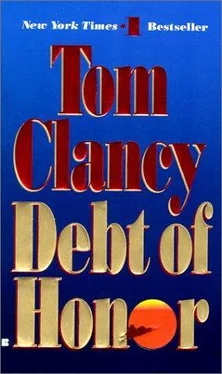
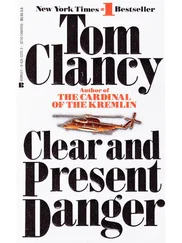

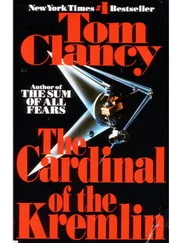
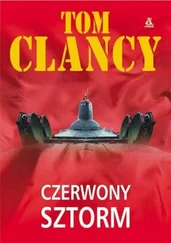

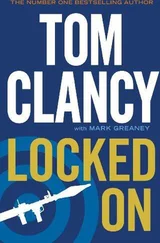
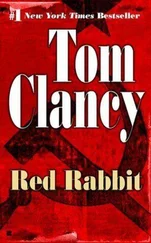

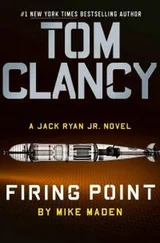
![Александр Ирвин - Tom Clancy’s The Division 2. Фальшивый рассвет [litres]](/books/417744/aleksandr-irvin-tom-clancy-s-the-division-2-falsh-thumb.webp)
